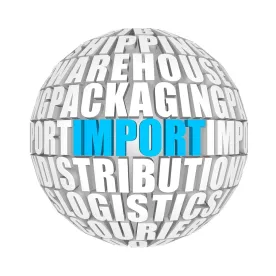On March 19, 2018, the U.S. Department of Commerce published procedures for seeking product-specific exclusions from the tariffs on steel and aluminum announced on March 8, 2018. According to these procedures, an exclusion may be granted only if (1) a particular product is not produced in the United States “in a sufficient and reasonably available amount,” (2) U.S. production of a particular product is not of “a satisfactory quality,” or (3) there is “a specific national security consideration” that warrants an exclusion.
Under the procedures announced by the Department of Commerce, parties seeking exclusions from these tariffs—which are 25 percent on steel and 10 percent on aluminum—must submit information, including the type of steel or aluminum for which an exclusion is sought, the foreign supplier of the steel or aluminum product, and the intended business use in the United States for the imports in question.
The Department of Commerce has provided forms on which this and other information must be submitted for both steel exclusions as well as aluminum exclusions. There is no time limit for seeking an exclusion for imported steel or aluminum, and the Department of Commerce advises that its review of exclusion requests will normally take 90 days or less. Exclusion requests will be posted online, and objections to exclusion requests may be filed within 30 days after their posting.
These procedures were foreshadowed in President Trump’s proclamations on steel and aluminum of March 8, 2018. In these proclamations, President Trump announced that 25 percent tariffs would be imposed on steel imports, while 10 percent tariffs would be imposed on aluminum imports. Imports from Canada and Mexico were exempted from tariffs on both steel and aluminum in the president’s March 8 proclamations.
Imports from other countries may also be exempted pursuant to ongoing negotiations. Australia, for instance, appears likely to be exempted. The administration has suggested that additional country exemptions could lead to tariffs increases from the 25 percent and 10 percent tariff rates currently applicable to steel and aluminum products, respectively.
The European Union—which is the second-largest foreign supplier of steel and aluminum to the United States, after Canada—has expressed concern with the imposition of these tariffs and may take a variety of actions in response. Specifically, the EU may challenge these tariffs in the World Trade Organization or impose retaliatory tariffs of its own. Covington’s Péter Balás, who most recently served as Deputy Director General, DG Trade to the European Commission, is monitoring the EU response.
The March 8 announcement followed a March 1 listening session, during which President Trump announced that tariffs would be imposed on steel and aluminum imports. On February 16, the Department of Commerce announced that it had recommended the imposition of global tariffs or other trade restrictions pursuant to its ongoing national security investigations of steel and aluminum imports under Section 232 of the Trade Expansion Act of 1962.






 />i
/>i

